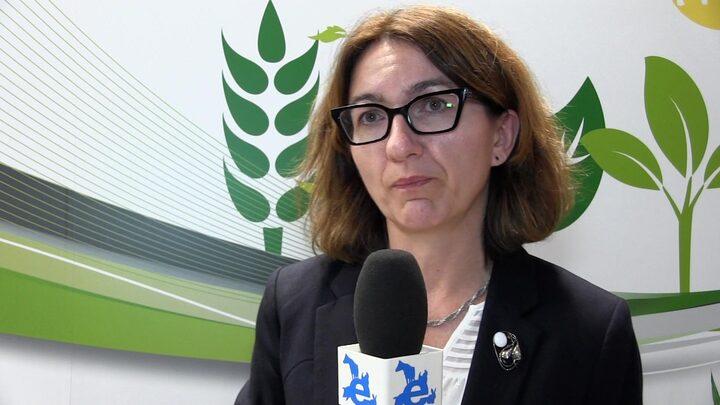Explore all the information on
Minerals in poultry nutrition
Minerals in poultry nutrition are typically classified as macro- or micro-minerals, depending on the levels needed in the diet. The macro-minerals include calcium, phosphorus, chlorine, magnesium, potassium, and sodium. Requirements for the macro-minerals are typically expressed as a percentage of the diet, while the requirements for the micro-minerals are stated as parts per million. Although the quantities required for micro-minerals are lower than for macro-minerals, they play an essential role in the body's metabolism. The micro-minerals include copper, iodine, iron, manganese, selenium, and zinc.
...
Comments : 0
Recommendations: 0
...
Comments : 0
Recommendations: 0
...
Comments : 0
Recommendations: 0
...
Comments : 0
Recommendations: 0


Current market review and perspective of Florfenicol, Tilmicocin, vitamins and aminoacids
Suggested link
...
Comments : 0
Recommendations: 0
Dr. Hugo Romero, Global Strategic Poultry Technology Manager at Novus International, points out the benefits of Copper supplementation in poultry production.
...
Comments : 1
Recommendations: 3
Edgar O. Oviedo-Rondón, Ph.D., from North Carolina State University (United States) speaks about management practices to overcome male breeders' fertility issues...
Comments : 2
Recommendations: 0
Dr. Insun Yu, Global Technical Manager for Trace Minerals in Asia, discusses why Intellibond is the smarter choice when choosing trace minerals ...
Comments : 0
Recommendations: 3


Antibacterial activity of Bacillus species-derived surfactin on Brachyspira hyodysenteriae and Clostridium perfringens (Extract)
Suggested link
INTRODUCTION Phytase is commonly supplemented in laying hen diets to increase the bioavailability of P and Ca. Dietary phytase supplementation increases Ca and P digestibility (Beutler, 2009), egg production, BW, eggshell quality, and bone quality in egg-laying hens (Hughes et al., 2009; Pelicia et al., 2009) and increases blood myo-inositol concentration in broilers (Sommerfeld et al., 2018). The effects of phytase in diets reduced in available P (avP) and Ca on laying...
Comments : 10
Recommendations: 1
Components of Gut Health The intestine is a complex organ that comprises regions with distinct structural and physiological functions specialized in digestion and nutrient absorption. Simultaneously, the gut represents the primary contact site with foreign antigens and pathogens that can enter, reside and disseminate to the internal organs. For this reason, the gut harbors the majority of immune cells, referred to as gut-associated lymphoid tissues, when compared to other tissues....
Comments : 0
Recommendations: 3
...
Comments : 0
Recommendations: 0
Background Biofortifications of chicken with bioactive nutrients such as DHA and calcidiol [25(OH)D3] have been viewed as an effective strategy to produce health-promoting meat for human consumption [1, 2]. Relatively low to moderate inclusion levels of calcidiol (1600 to 2800 IU/kg diet) [3, 4] and DHA-rich microalgal biomass or oil (0.55 to 2.55 g DHA/kg diet) [5–7] in broiler diets caused no negative effects on growth performance, lipid profile of tissues, or...
Comments : 0
Recommendations: 0
Silvia Peris Miras, DVM, Ph.D., Executive Regional Technical Services Manager for Europe, Africa & Middle East at Novus International speaks about the role of zinc, copper, and manganese trace minerals in Breeder Hens...
Comments : 1
Recommendations: 0
What really matters in feed phosphates? The quality of a feed phosphate is determined by the total phosphorus content and its absorbability. In other words, the total amount of P which is available to be used (absorbed) by the animal. Although current formulation systems assume a 100% absorbability for all the inorganic feed phosphates, current research demonstrated differences in absorbability of P content among different types of phosphate. Moreover, significant differences in...
Comments : 1
Recommendations: 0
Effects of heat stress on plasma calcium concentration, egg production and egg quality Highly productive modern poultry breeds are more prone to heat stress and rising global temperatures is one of the greatest challenge for the industry. It greatly damages a bird’s performance in terms of feed intake, feed conversion, body weight, egg production, rooster activity and hatchability (Nilipour, 1996). Stress of high environmental heat during summer also interfere with the...
Comments : 0
Recommendations: 0
INTRODUCTION Phosphorus (P) is an essential mineral for all farm animals and plays a key role in cellular metabolism, cellular regulatory mechanisms and in bone mineralisation (Suttle, 2010). Furthermore, next to calcium (Ca), it is the most abundant mineral in the body of farm animals including poultry (Georgievskii et al., 1982). In most diets for poultry, a source of inorganic P, for example, monocalcium phosphate (MCP) or dicalcium phosphate (DCP), is included to fulfill the...
Comments : 1
Recommendations: 2
In the summer season, as the temperature increases, poultry suffers from the condition called heat stress, also known as summer stress. This is a condition of imbalance between heat generation and heat loss in the body. This condition not only brings poor performance in birds but is also...
Comments : 2
Recommendations: 4
Introduction Academia and industry have invested huge resources into defining both the nutrient composition of feedstuffs and nutrient requirements of meat and egg-type poultry. Both aspects are highly complex because of their dynamic nature. Nutrient availabilities depend on the genetics of each feedstuff, but also geographic region, weather, and growing conditions. These factors impact both the quantity of nutrients and the molecular structures from which those nutrients must...
Comments : 0
Recommendations: 1
Maternal supplementation of different levels bis-chelated trace minerals on reproductive performance of broiler breeder and growth performance of progeny subjected to coccidia challenge Song Bin 1 , Shiping Bai 1 , Keying Zhang 1 , Xuemei Ding 1 , Jianping Wang 1 , Qiufeng Zeng 1 , Quan Tan 2 , Yuyun Mu 2 , Juxing Chen *2 . 1 Animal Nutrition Institute, Sichuan Agricultural University, 2...
Comments : 0
Recommendations: 0
Dr. Juxing Chen, Senior Manager of Structure/ Function Biology at Novus, points out why poultry producers should be interested in maternal nutrition to help achieve their financial or sustainability goals...
Comments : 0
Recommendations: 0





















_1.jpg&w=3840&q=75)







.jpg&w=3840&q=75)







